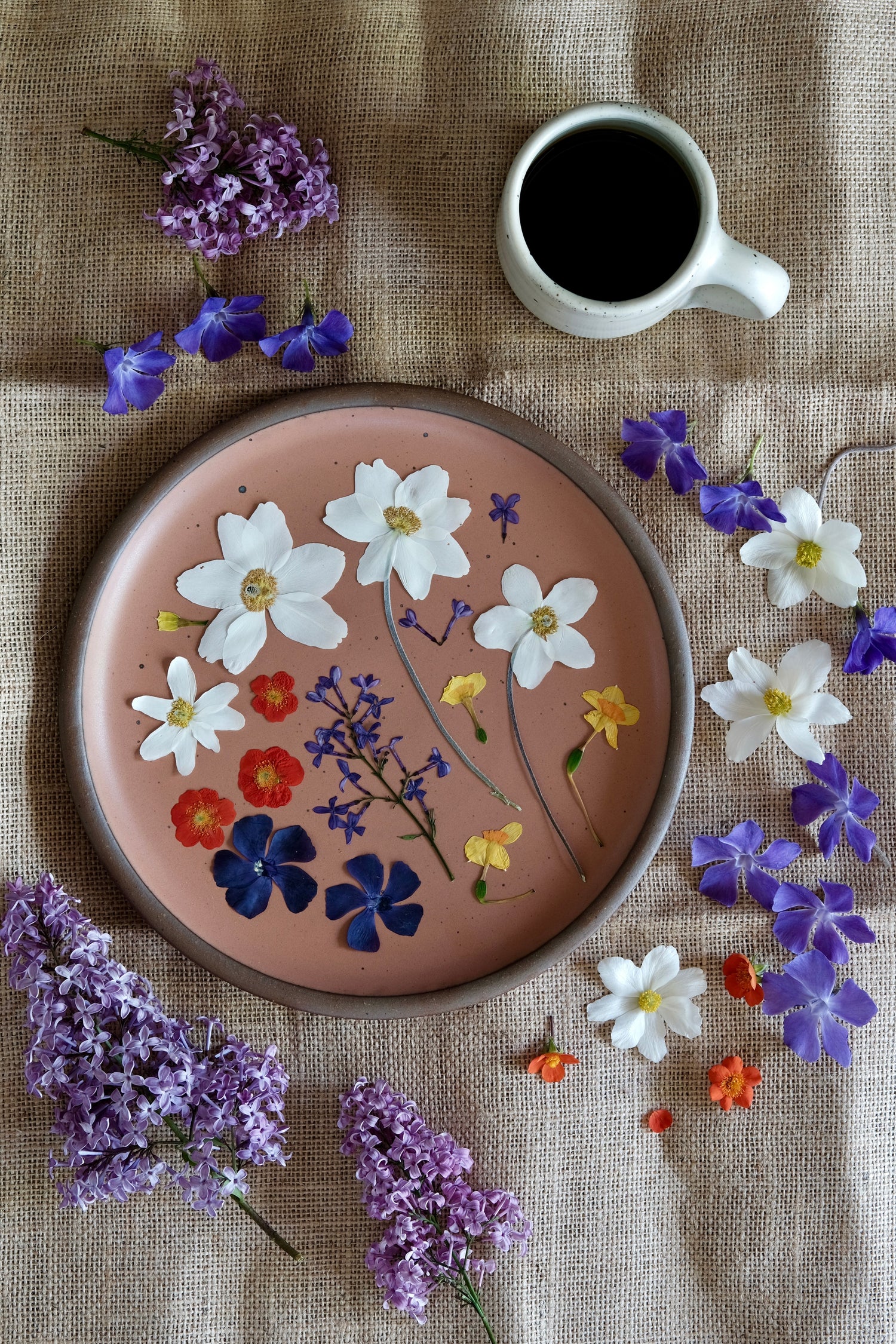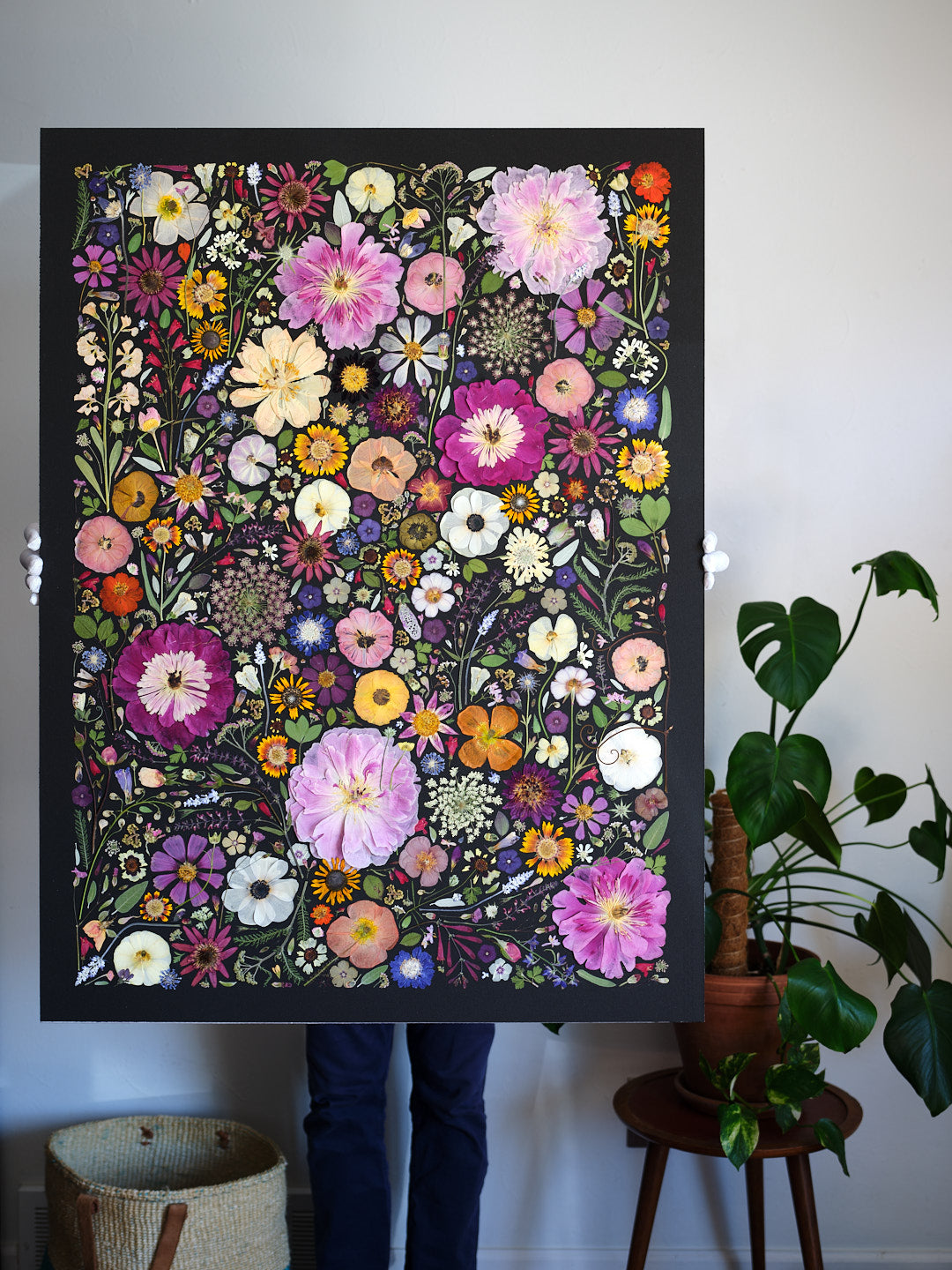This is how it all began for us. We planted a garden to satisfy the urge to put our hands in the soil, to feel the earth, to dig in the dirt, to feel more connected to something greater than ourselves and our computers and our jobs and the rest of the grind that comes with daily life. We planted a garden. We nourished our souls. We moved forward in a more meaningful way with our lives. We planted OUR garden. We began shaping our life. And as we watched our garden grow, we grew too.

That’s what a garden can do for you. It can slow your life down. It can be meditation. It helps you learn. It makes you notice nature, and how all its little critters work together. We didn’t learn how to press flowers from workshops or other people. Our garden taught us this, too. It began with poppies. And then it progressed and we pressed and pressed and pressed: Sunflowers, Marigolds, Cosmos, African Daisies, Zinnias, Mexican Hat, Lavender, Bachelor Button, Coneflower, Buckwheat, Calendula, Coreopsis, Mountain Mint, Catmint, Chocolate Mint, Common Mint, Thyme, Nasturtium, Yarrow, Russian Sage, Hollyhock, Dahlia, Ranunculus, Ninebark, Mock Orange, Tulip, Rose, Raspberry leaf, Comfrey, Artemesia, Aster, Perennial Blue Flax, Bee Balm, Allium.
A few mornings a week, we will wake up, go out to our garden, pick flowers, and press. The flowers teach us. We open up the presses the next day and look at the flowers, observing them. We see that the dahlia we pressed whole is browning. Too many layers. So with the next one, we thin down. We press some cosmos on the stem and we cut some off of the stem and just press the flower. We notice things. We press whole roses without depetaling and notice how they brown if they’re not taken down to just a few layers. We start deconstructing some flowers and then reconstructing them once fully pressed. We notice how some flowers can retain their organic natural beauty when reassembled and we also notice how other flowers do better when pressed whole and left as is. We press a marigold as is. We open the press the next day. The marigold isn’t flattening very well. So we go out to the garden and pick another marigold. We splice it. We lay the two sides flat on a piece of paper in the press. We close the press. We open it the next day. We look at the marigold. We observe. You evolve. You learn. And this is how the process goes. So on. And so forth. The flowers grow. You keep picking. And pressing. And learning.
We encourage you to get out into your garden and pick and PRESS! Don’t be scared. Like anything else in life, you can only get so far reading and weighing the pros and cons in your mind. Just do it because that’s when the real learning begins.
And of course, we’d happily press, design, and frame a bouquet from your garden for you!





2 comments
Hey Debi, We do not. We have a course though on our website. That is the most helpful.
Thanks for all the information ! Do you have a book or something that I could have in front of me . Hard copy .
Beautiful work too !!